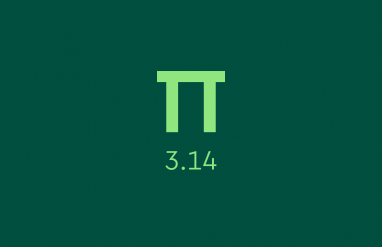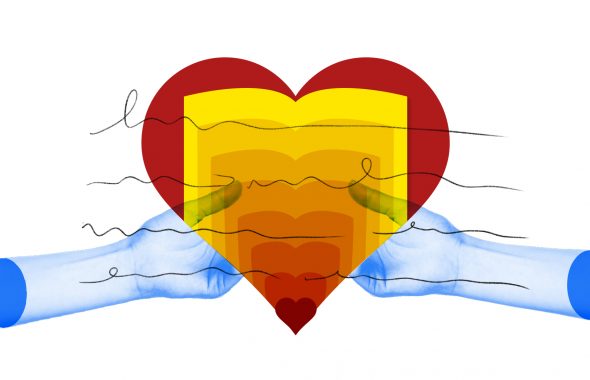by Ashley Austrew
Most of us are familiar with the concept of being burned out. It’s that feeling you get when you’re stressed, overwhelmed, and simply don’t have any more energy to devote to a given task, activity … or career.
Traditionally, the word burnout has been used more as a self-diagnosis or casual expression rather than treated as a medical syndrome or mental health problem. However, our understanding of burnout and its role in health is changing.
What is burnout?
Burnout, also written as burn-out, is “fatigue, frustration, or apathy resulting from prolonged stress, overwork, or intense activity.” It comes from the verb phrase to burn out, “to burn until fuel is exhausted.” By the mid-1900s, this was metaphorically extended to burn (oneself) out, or “to exhaust one’s energy, ideas, etc., through overwork.”
In 1974, psychologist Herbert Freudenberger published an article, “Staff Burnout,” that is credited with beginning the formal study of burnout as a medical syndrome. Drawing on the existing idiom of burning (oneself) out, Freudenberger defined—and helped popularize—workplace burnout as “becoming exhausted by making excessive demands on energy, strength, or resources.” (We should note there is an older, more literal noun burnout found in the early 1900s, meaning “a fire that is totally destructive of something.”)
Since Freudenberger, burnout has been increasingly used not just in colloquial terms but in discussions as a mental health issue and in research by medical professionals. However, it was not until May 2019 that burnout became an official diagnosis.
Why is burnout relevant now?
In 2019 the International Classification of Diseases (ICD-11), which acts as the World Health Organization’s (WHO) handbook to help medical professionals treat illnesses, announced that burnout would be classified and described under “problems associated with employment or unemployment.” (The previous edition, ICD-10, only briefly noted burnout as a “state of vital exhaustion” under “problems associated with life-management difficulty.”)
This is especially relevant now, as the Medscape National Physician Burnout & Suicide Report from January 2020 reported that 42 percent of physicians felt “burned out.” Emergency care and critical care were among the top specialties for those physicians reporting burnout. Physicians and others “worry the COVID-19 pandemic is compounding another, less heralded epidemic — physician burnout.”
#Burnout is included in the 11th Revision of the International Classification of Diseases (#ICD11) as an occupational phenomenon.
It is NOT classified as a medical condition https://t.co/t9pjcv3ctX pic.twitter.com/FF6Zzfwoj7— World Health Organization (WHO) (@WHO) May 28, 2019
The ICD-11 defines burnout as “a syndrome conceptualized as resulting from chronic workplace stress that has not been successfully managed.” It goes on to describe three dimensions:
- Feelings of energy depletion or exhaustion
- Increased mental distance from one’s job, or feelings of negativism or cynicism related to one’s job
- Reduced professional efficacy
It’s critical to note, however, that the WHO acknowledges burnout only as an “occupational phenomenon,” rather than as a medical condition (e.g., a disease). Nonetheless, the move legitimizes burnout as a real impediment to health and productivity, not just as hyperbole or as a synonym for “stressed out,” and this may help compel health professionals and employers to take it more seriously.
Who can get burnout?
Because burnout has not been classified as a diagnosis before now, it is difficult to get a clear count of the number of people suffering from the phenomenon. A 2018 Gallup study of 7,500 full-time employees reported that 23 percent reported feeling burned out at work very often or always, while an additional 44 percent reported feeling burned out sometimes. In 2017, a study by Kronos found that 95 percent of human resource leaders say burnout is sabotaging their efforts to retain employees longterm.
Burnout isn’t only related to employment. According to the Cleveland Clinic, longterm caregivers can suffer from burnout, as can people in other difficult family or living situations. In 2019, BuzzFeed News published a piece that referred to millennials as “the Burnout Generation.” In it, reporter Anne Helen Petersen posits that stagnant wages, longer working hours, and fewer opportunities to climb the socioeconomic ladder are contributing an entire generation of people who are chronically exhausted, mentally and emotionally.
Of course, millennials aren’t the only group dealing with these problems. The Pew Research Center reported that US workers in 2018 had about the same purchasing power as they did 40 years ago. This means that wage increases have not kept up with the cost of inflation, so even though salaries have gone up, people cannot actually afford more than they could before.
Another major factor in burnout is the number of hours most people are working. Most Americans spend more than 40 hours per week at work, based on data by the US Bureau of Labor Statistics. Currently, the US also has no federal law requiring paid sick leave or paid maternity leave. In essence, people are working longer hours for less pay and have fewer benefits than people in other developed countries, and that can play a role in the chronic stress and fatigue that characterizes burnout. Those with extremely demanding professions, such as doctors and nurses, are especially at a high risk of burnout.
Finally, many people still face barriers in trying to access mental health care. Due to insurance limitations, nearly one in five Americans say they have had to choose between getting treatment for a physical health condition and a mental health condition, according to a survey by the National Council for Behavioral Health. Moreover, the same survey showed that 38 percent of Americans seeking treatment have had to wait longer than one week to see a mental health care provider, and 46 percent have or know someone who has driven more than an hour roundtrip to seek treatment.
It’s not difficult, then, to imagine that chronic stress and anxiety, paired with difficulties in accessing mental health care, could lead to an epidemic of people experiencing burnout.
Is burnout a legitimate diagnosis?
As with all mental health issues, there are naysayers who doubt the validity of burnout, claiming it’s just “laziness” or “whining.” And for many people, the word burnout is still primarily associated with non-medically related stress and exhaustion, so it may take time for a collective understanding of the word to evolve.
A great illustration of burnout. Stress does not cause burnout it is the lack of support and resources that cause burnout. pic.twitter.com/PPRtDgYa5X
— Kay Dunkley (@M_Kay_Dunkley) July 7, 2019
While burnout may not be classified as a full-blown medical condition, the WHO’s move to classify it as an occupational phenomenon proves that burnout is not only real, it’s also having a significant and harmful impact on individuals. It’s time to treat the term—and the phenomenon—as such.
Ashley Austrew is a freelance journalist and writer from Omaha, Nebraska. Her work has been published at Cosmopolitan, Scary Mommy, Scholastic, and other outlets. For more by Ashley, read: “Teacher” vs. “Tutor”: Why Most Kids Need Both | Leave The Best Impression With Our Tips For National Proofreading Day | Make Your Writing The Star Of National Grammar Day With These Tips













